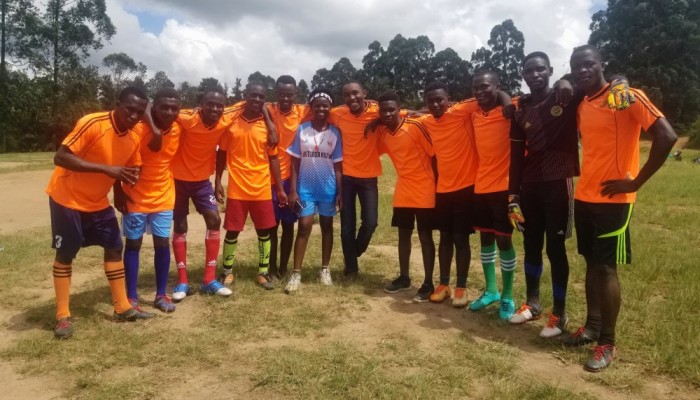
Apr
Bunyoro-Tooro Students Association Participate in Games to Mark Their Sports Day
April 23, 2024, 8:32 am
| Title: | Insights into the HIV latency and the role of cytokines |
| Author(s): | Joseph Hokello, Adhikarimayum Lakhikumar Sharma, Manjari Dimri and Mudit Tyagi |
| Year | 2019 |
| Publisher: | Pathogens 2019, 8, x; www.mdpi.com/journal/pathogens |
| URI: | https://publications.kiu.ac.ug/publication-page.php?i=insights-into-the-hiv-latency-and-the-role-of-cytokines |
| File: | |
| Keywords: | HIV-1 latency eradication transforming growth factor-beta (TGF-β) resting memory CD4+ T-cells |
Human immunodeficiency virus-1 (HIV-1) has the ability to infect latently at the level of individual CD4+ cells. Latent HIV-1 proviruses are transcriptionally silent and immunologically inert, but still capable of reactivating productive lytic infection following cellular activation. These latent viruses are the main obstacle in the eradication of HIV-1 because current HIV-1 treatment regimens are ineffective against them. Normal immunological response against an antigen activates CD4+ naïve T cells. The activated CD4+ naïve T cells undergo cell cycle, resulting in further transformation and profound proliferation to form effector CD4+T-cells. Notably, in HIV-1 infected individuals, some of the effector CD4+ T cells get infected with HIV-1. Upon fulfillment of their effector functions, almost all activated CD4+ T cells are committed to apoptosis or programmed cell death, but a minuscule fraction revert to quiescence and become resting memory CD4+ T cells to mediate a rapid immunological response against the same antigen in the future. However, due to the quiescent nature of the resting memory T cells, the integrated HIV-1 becomes transcriptionally silent and acquires a latent phenotype. Following re-exposure to the same antigen, memory cells and integrated HIV-1 are stimulated. The reactivated latent HIV provirus subsequently proceeds through its life cycle and eventually leads to the production of new viral progeny. Recently, many strategies against HIV-1 latency have been developed and some of them have even matured to the clinical level, but none can yet effectively eliminate the latent HIV reservoir, which remains a barrier to HIV-1 cure. Therefore, alternative strategies to eradicate latent HIV need to be considered. This review provides vital knowledge on HIV latency and on strategies to supplement highly active antiretroviral therapy (HAART) with cytokine-mediated therapeutics for dislodging the latent HIV reservoirs so as to open up new avenues for curing HIV.

Kampala International University,
Box 20000, Ggaba Road, Kansanga, Kampala